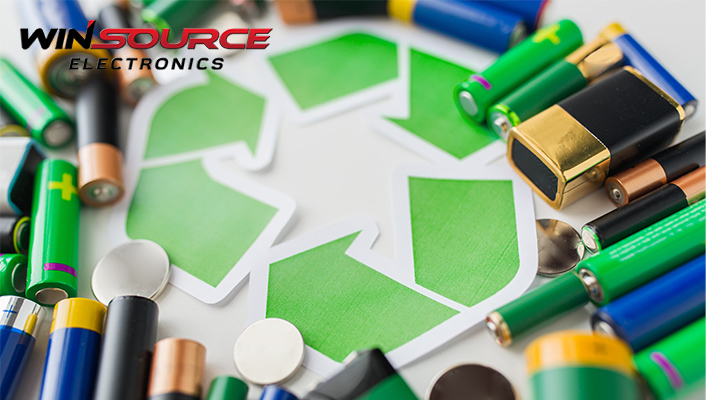
In today’s globalized world, the rapid development of the electronics industry has brought tremendous market opportunities but also significant environmental challenges, particularly regarding the disposal of electronic waste. As consumer awareness of sustainable development grows, the responsibility of corporations in managing electronic waste has become increasingly important. This article explores the strategies that companies can adopt to reduce electronic waste and how these strategies can help achieve environmental, social, and economic sustainability.
Definition and Current Situation of Electronic Waste
Electronic waste, commonly called e-waste, includes all discarded electronic and electrical devices and their components. With the rapid advancement of technology and the increasing frequency of electronic product replacement, the amount of e-waste has surged, becoming a major global environmental issue. According to the United Nations Environment Programme (UNEP) , the world generates about 50 million tons of e-waste annually, but only around 20% is properly treated and recycled. Inadequate management of e-waste leads to the release of harmful substances, such as lead, mercury, and cadmium, into the environment, causing severe pollution and posing significant health risks, including cancer and neurological disorders.
The Necessity of Reducing Electronic Waste
Improper handling of electronic waste not only poses a threat to the environment and health but also leads to significant waste of valuable resources. E-waste contains a large amount of precious metals, such as gold, silver, and copper, whose recycling holds considerable economic value. Effective management and reduction of e-waste are not only necessary for compliance with relevant laws and regulations but also for enhancing corporate social responsibility and improving corporate image. By implementing effective waste management strategies such as recycling and resource recovery, companies can increase resource efficiency, reduce production costs, and achieve environmental and economic benefits. Therefore, strengthening the scientific management of e-waste has become an indispensable part of a company’s sustainable development strategy.
Strategies for Reducing Electronic Waste
1.Designing Sustainable Products
The first step in reducing e-waste is considering sustainability at the product design stage. By designing products that are easy to disassemble, repair, and upgrade, companies can not only extend the life of their products but also make it easier to recycle components and materials when the products are discarded. For example, modular design allows consumers to replace only the damaged parts instead of the entire device, reducing waste and improving resource efficiency.
2.Implementing Extended Producer Responsibility (EPR)
Extended Producer Responsibility (EPR) refers to manufacturers taking on environmental responsibility throughout the entire product lifecycle, including the recycling and disposal of products at the end of their use. By implementing EPR policies, companies must ensure that their products can be safely and effectively recycled at the end of their lifecycle. This not only alleviates the burden on governments and consumers but also encourages companies to reduce waste at the source and improve the recyclability of their products. For example, the EU’s Waste Electrical and Electronic Equipment Directive requires electronic device manufacturers to be responsible for the recycling and disposal of their products, ensuring proper management at the end of the product lifecycle.
3.Adopting Green Supply Chain Management
Green supply chain management involves implementing environmental measures throughout the supply chain to reduce the impact on the environment. This includes selecting suppliers with a strong sense of environmental responsibility, using sustainable materials, and optimizing production processes to reduce waste and energy consumption. Through green supply chain management, companies can not only reduce environmental pollution but also enhance brand image and market competitiveness.
4.Enhancing Consumer Awareness and Participation
Companies can also reduce e-waste by educating consumers. By offering product recycling programs, repair services, and upgrade options, and raising awareness of the impact of e-waste, companies can encourage consumers to make more environmentally friendly choices. Additionally, companies can use social media, advertising, and public events to promote sustainable consumption and raise public environmental awareness.
Case Study: WIN SOURCE’s Excess Inventory Management
As the world’s leading distributor of electronic components, WIN SOURCE is also an expert in excess inventory management, helping customers turn potential burdens into valuable assets. When electronic components become redundant due to technological advancements or project cancellations, these components often face the risk of depreciation and become underutilized costs. To maximize the economic value of these resources and ensure their sustainability, WIN SOURCE employs specialized management strategies.
Through WIN SOURCE’s one-stop online platform(https://www.win-source.net/), customers can easily submit their inventory lists. The expert team customizes strategies to accurately assess the value and condition of the electronic components, often providing the most competitive quote within 24 hours.
WIN SOURCE offers customers a variety of flexible processing options, including “bulk purchase,” “off-site consignment,” and “on-site consignment,” as well as combinations of these strategies. This not only helps customers reduce inventory occupancy and related costs but also supports corporate environmental goals by increasing resource recovery rates. Furthermore, the meticulously designed solutions enhance profitability and sustainability, ensuring customers achieve maximum economic benefits while complying with environmental regulations. Through this approach, surplus electronic components are reused, helping global customers achieve greener and more sustainable supply chain management.
As global attention to sustainable development continues to grow, companies in the electronics industry have a responsibility to take proactive measures to reduce the generation and impact of e-waste. By implementing the strategies outlined above, companies can not only fulfill their environmental responsibilities but also gain a competitive edge in the market. Ultimately, these efforts will contribute to the harmonious progress of economic, social, and environmental goals, driving the achievement of global sustainability objectives.
Reprinted from WIN SOURCE ELECTRONIC-NEWS
©2024 Win Source Electronics. All rights reserved. This content is protected by copyright and may not be reproduced, distributed, transmitted, cached or otherwise used, except with the prior written permission of Win Source Electronics.

COMMENTS